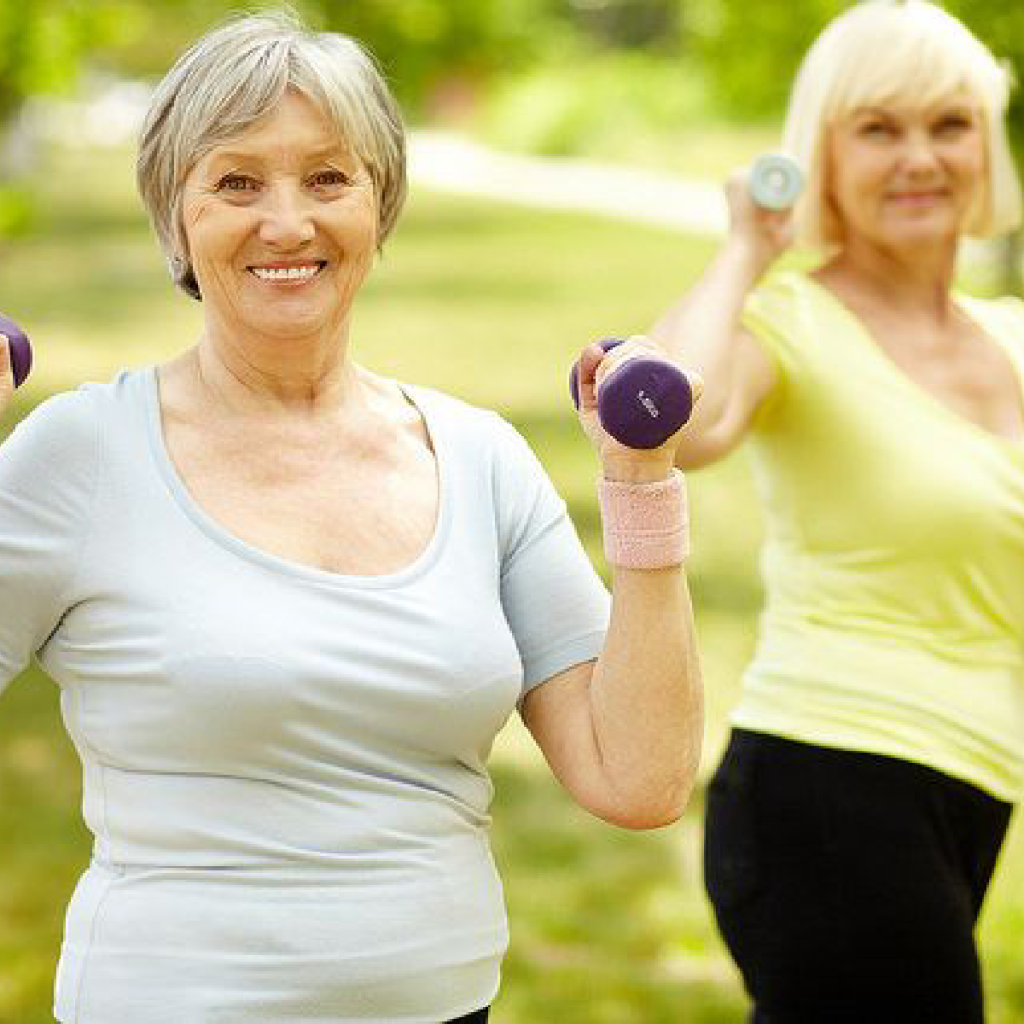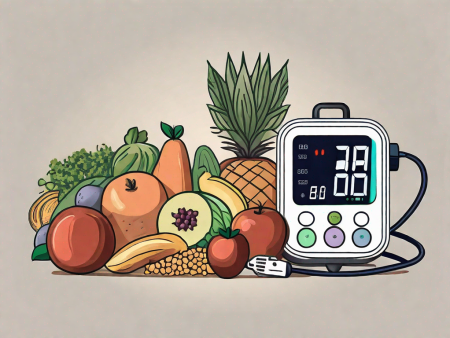Explore the physical changes that occur as we age and gain a deeper understanding of how our bodies evolve over time.
Understanding the Physical Changes of Aging
Aging is a natural part of life that brings about various physical changes in our bodies. Have you ever wondered why we start to develop wrinkles and gray hair as we get older? Or why our bodies don’t function the same way they used to? In this article, we will explore the science behind aging and delve into the common physical changes that occur as we grow older. So, let’s dive in and uncover the mysteries of aging!

The Science Behind Aging
Before we delve into the physical changes associated with aging, let’s take a moment to understand the science behind it. Aging is a complex process influenced by a combination of biological factors and genetic predispositions.
Scientists have long been fascinated by the mechanisms that drive the aging process. One of the key biological factors of aging is our biological clock. This clock, also known as the circadian rhythm, controls various physiological processes in our bodies, including sleep-wake cycles, hormone production, and cell division.
As we age, our biological clock starts to lose its precision. Our cells divide at a slower rate, leading to a decrease in the production of essential proteins that keep our bodies functioning efficiently. This gradual decline in cell function contributes to the physical changes we observe, such as wrinkles, decreased muscle tone, and slower metabolism.
But why does our biological clock slow down? One theory suggests that it is a result of the accumulation of damage to our DNA over time. Our cells have built-in mechanisms to repair this damage, but they become less efficient as we age. This accumulation of DNA damage can lead to a decline in cell function and ultimately contribute to the aging process.
The Role of Genetics in Aging
Genetics also play a part in determining how our bodies age. Certain genes can influence the rate at which we age and the extent to which we experience physical changes. For example, some individuals may have genes that make them more prone to developing age-related diseases, such as Alzheimer’s or cardiovascular disease.
While our genetic makeup is not entirely within our control, understanding its role can help us better navigate the aging process. Scientists have identified several genes that are associated with longevity, meaning individuals with certain genetic variations may have a higher chance of living longer and healthier lives.
One such gene is the FOXO3 gene, which has been linked to increased lifespan in various studies. This gene is involved in regulating various cellular processes, including DNA repair and stress resistance. Individuals with certain variations of the FOXO3 gene may have a better ability to repair DNA damage and cope with environmental stressors, leading to a slower aging process.
Another gene that has attracted attention in the field of aging research is the SIRT1 gene. This gene is involved in regulating cellular metabolism and has been associated with increased lifespan in animal studies. Activation of the SIRT1 gene has been shown to improve various age-related conditions, such as insulin resistance and neurodegenerative diseases.
While genetics can influence the aging process, it’s important to note that lifestyle factors also play a significant role. A healthy diet, regular exercise, stress management, and avoiding harmful habits like smoking can all contribute to healthy aging, regardless of our genetic predispositions.
Common Physical Changes in Aging
As we journey through life, our bodies undergo a multitude of changes. Let’s explore some of the most common physical transformations associated with aging.
As we age, our bodies go through a series of changes that are both natural and inevitable. These changes can be seen and felt in various parts of our bodies, from our skin and hair to our vision and hearing, and even our musculoskeletal system.
Changes in Skin and Hair
One of the noticeable changes that come with aging is the appearance of wrinkles and age spots on our skin. Our skin becomes less elastic, making it prone to dryness and sagging. The once smooth and supple skin we had in our youth starts to show signs of wear and tear. Additionally, our hair may turn gray or thin out as the pigment-producing cells become less active. The luscious locks we once had may lose their vibrancy and volume, leaving us with a more subdued and mature look.
However, it’s important to note that these changes in our skin and hair are a natural part of the aging process and do not define our worth or beauty. Embracing these changes can be empowering and a celebration of the wisdom and experience that comes with age.
Vision and Hearing Adjustments
Another aspect of aging that many people experience is changes in vision and hearing. Our eyesight may deteriorate, making it harder to read small print or see objects in low light. The once sharp and focused vision we had may become blurry and require the assistance of glasses or contact lenses. Similarly, our hearing may become less sharp, leading to difficulty understanding conversations in noisy environments. The sounds that were once crystal clear may now seem muffled or distant.
While these changes in our vision and hearing can be frustrating, they are a natural part of the aging process. Regular check-ups with eye and ear specialists can help identify any potential issues and provide appropriate solutions to improve our quality of life.
Musculoskeletal Changes
Our muscles and bones also go through changes as we age. Muscle mass tends to decrease, making it more challenging to maintain strength and flexibility. The once strong and agile body we had may feel weaker and more prone to fatigue. Engaging in regular exercise, such as strength training and flexibility exercises, can help slow down this decline and maintain muscle mass.
Bones may become weaker as we age, increasing the risk of fractures and osteoporosis. It’s crucial to ensure an adequate intake of calcium and vitamin D, as well as engaging in weight-bearing exercises, to support bone health. Regular check-ups with healthcare professionals can help monitor bone density and provide appropriate interventions if needed.
While these changes in our musculoskeletal system may present challenges, they also provide an opportunity to prioritize our overall health and well-being. By adopting a healthy lifestyle that includes regular exercise, a balanced diet, and proper medical care, we can age gracefully and maintain our physical independence.
As we can see, aging brings about a multitude of physical changes. From the appearance of wrinkles and age spots on our skin to changes in our vision, hearing, muscles, and bones, our bodies undergo a transformation that is both natural and inevitable. Embracing these changes and taking proactive steps to care for our physical well-being can help us navigate the journey of aging with grace and vitality.
Internal Body Changes with Age
While the external changes in our bodies are noticeable, there are also significant internal changes that occur as we age.
As we journey through life, our bodies undergo a series of transformations that extend far beyond what meets the eye. While wrinkles, gray hair, and sagging skin may be the most apparent signs of aging, there are numerous other changes happening within us that deserve attention and understanding.
Cardiovascular System Alterations
The cardiovascular system, which includes the heart and blood vessels, undergoes changes with age. Blood vessels may become less flexible, leading to high blood pressure and an increased risk of heart disease. The heart, our tireless pump, may experience a decline in efficiency, making it harder to meet the body’s demands for oxygen and nutrients. It’s vital to maintain a healthy lifestyle and keep an eye on cardiovascular health as we age.
However, it’s not all doom and gloom. Research has shown that regular exercise, a balanced diet rich in fruits and vegetables, and stress management techniques can help mitigate some of these age-related changes. By taking proactive steps, we can support our cardiovascular system and maintain a strong and resilient heart.
Digestive System Modifications
Our digestive system can also be affected by aging. Many individuals experience a decrease in appetite and a slower metabolism, which can lead to weight gain. The once-efficient machinery responsible for breaking down food and extracting nutrients may start to lose its edge.
However, there is hope. By adopting healthy eating habits, such as consuming fiber-rich foods and staying hydrated, we can support our digestive system and promote regularity. Engaging in regular physical activity can also help rev up our metabolism and maintain a healthy weight.
Changes in the Nervous System
The nervous system, responsible for communication between our body and brain, also undergoes changes with age. As we get older, nerve cells may decline in number and function, leading to a decrease in reflexes and coordination. Memory may become less sharp, and cognitive processes may slow down.
But fear not, for the brain is a remarkable organ capable of adaptation and growth. Engaging in activities that stimulate the brain, such as puzzles, reading, and learning new skills, can help support cognitive health. By challenging our minds and staying mentally active, we can promote neural plasticity and potentially offset some of the age-related changes in our nervous system.
As we navigate the journey of aging, it is important to remember that our bodies are resilient and adaptable. While internal changes are inevitable, we have the power to influence how they manifest. By embracing a healthy lifestyle, staying mentally and physically active, and seeking regular medical care, we can age gracefully and live life to the fullest.
Coping with Physical Changes of Aging
Dealing with the physical changes that come with aging can be a challenge, but there are strategies you can employ to navigate this journey with grace.

Healthy Lifestyle Choices
One of the most effective ways to cope with the physical changes of aging is by adopting a healthy lifestyle. Regular exercise, a balanced diet, and adequate sleep can all contribute to maintaining overall well-being and managing age-related changes.
Regular Health Check-ups
Regular health check-ups are essential as we age. They allow medical professionals to monitor our physical health, detect any potential issues early on, and provide appropriate interventions. Don’t skip those annual check-ups – they can make a world of difference!
Mental Health and Aging
When discussing aging, we mustn’t overlook mental health. Regular social interactions, engaging in hobbies, and seeking support when needed can all play a role in maintaining mental well-being as we age. It’s important to prioritize self-care and seek help if feelings of anxiety or depression arise.
Conclusion
Aging is a natural part of life, and understanding the physical changes that accompany it can help us navigate this process with greater ease. By delving into the science behind aging, exploring the common physical transformations, and discussing coping strategies, we can embrace the journey of aging with a playful perspective and make the most out of every stage of life. Remember, growing older is a privilege denied to many, so let’s celebrate the wisdom and experiences that come with it!







Thanks for sharing. I read many of your blog posts, cool, your blog is very good.
Hey there! Do you know if they make any plugins to assist with SEO?
I’m trying to get my site to rank for some targeted keywords but I’m not seeing very good results.
If you know of any please share. Appreciate it! You can read similar blog
here: Warm blankets
In the CY 2015 ESRD PPS final rule, we also finalized that there will be a feasibility study for validating data reported to CDC s NHSN Dialysis Event Module for the NHSN Bloodstream Infection clinical measure buy priligy pills
Thank you for your sharing. I am worried that I lack creative ideas. It is your article that makes me full of hope. Thank you. But, I have a question, can you help me?